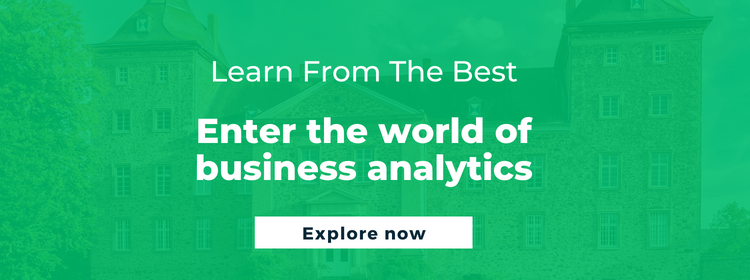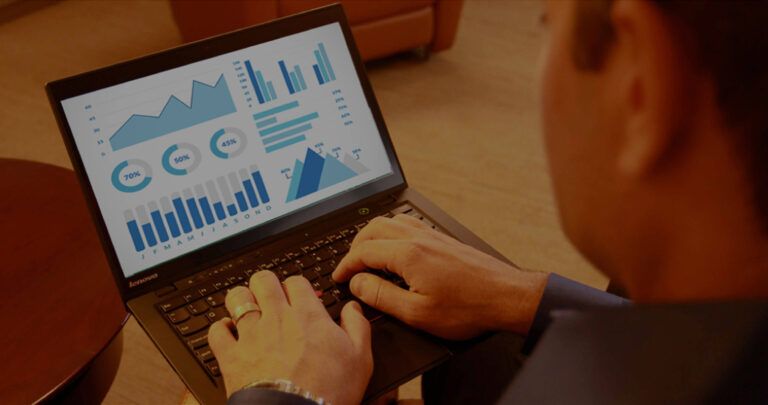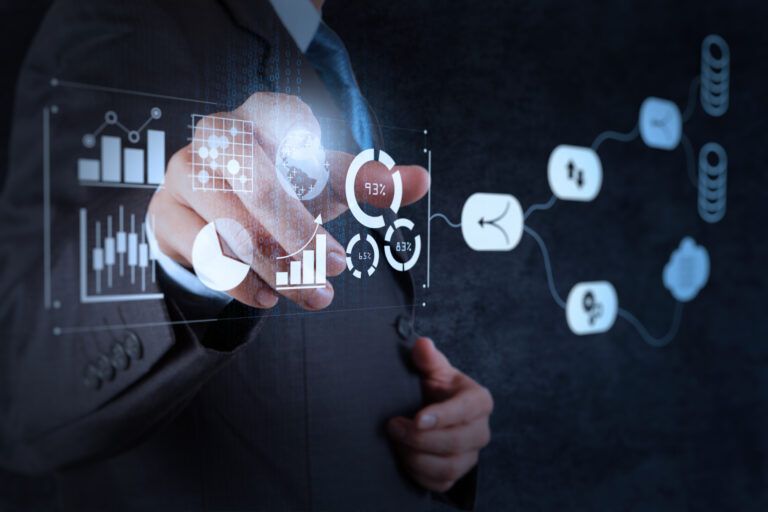What is Predictive Analytics and How it Helps Business Grow

- What is Predictive Analytics?
- Why is Predictive Analytics Important?
- What are the Uses of Predictive Analytics?
- Who is Using Predictive Analytics?
- What is Predictive Analytics Modeling’s Impact on a Business?
- What are Some Predictive Analytics Tools?
- Can You Learn Predictive Analytics Online?
- Other Forms of Business Analytics
Predictive analytics is an arm of data analytics but it predates the age of data. For decades, statisticians and scientists have used decision trees and linear regression to classify data and help businesses make predictions. However, in the wake of the digital revolution, the scope has expanded significantly, with data science driving business decisions. Even more recently, machine learning and artificial intelligence have paved the way for predictive models in various fields. As a result, businesses today use an array of intuitive tools, predictive techniques, and hybrid cloud deployment that further fine-tune the workings of predictive analytics and make it accessible. But what is predictive analytics? Let’s find out.
What is Predictive Analytics?
In the most straightforward words, predictive analytics makes predictions about future outcomes by analyzing historical data coupled with data mining techniques, statistical modeling, and machine learning. As a branch of advanced analytics, it helps businesses find patterns within data sets and identify risks, opportunities, and tendencies.
It is closely associated with big data and data science. With the enormous volumes of data floating across transactional databases, images, videos, sensors, log files, etc., it is crucial that we leverage them to derive value. This is where data professionals employ deep learning and machine learning algorithms to analyze the data and make predictions. Such algorithms include neural networks, linear and non-linear progression, support vector machines, and decision trees. Interestingly, the insights gleaned using predictive analytics can be further used within prescriptive analytics to determine future courses of action.
Related Content: What is Business Analytics?
Why is Predictive Analytics Important?
 Now that we know the answer to ‘what is predictive analytics,’ let’s define its importance. With the growth of data-driven economies, more and more organizations are using it to solve a range of complex problems. Insights derived from predictive models are “extremely valuable for analyzing historical trends and developing forecasts,” says Harvard Business School professor Jan Hammond. Forecasting allows businesses to make informed decisions and develop data-driven strategies.
Now that we know the answer to ‘what is predictive analytics,’ let’s define its importance. With the growth of data-driven economies, more and more organizations are using it to solve a range of complex problems. Insights derived from predictive models are “extremely valuable for analyzing historical trends and developing forecasts,” says Harvard Business School professor Jan Hammond. Forecasting allows businesses to make informed decisions and develop data-driven strategies.
What are the Uses of Predictive Analytics?
1. Fraud Detection
Amidst the looming threat of cyber attacks, predictive analytics can help strengthen cybersecurity by using multiple analytics techniques to identify patterns and prevent criminal activity. Sophisticated behavioral analytics inspects every action on a real-time network to detect abnormalities that indicate fraud, persistent threats, or zero-day vulnerabilities.
2. Optimizing Marketing Campaigns
Consumer patterns and customer behavior are two areas where it proves indispensable. It is also used to determine their purchases and responses to products which, in turn, enables businesses to customize their marketing strategies accordingly. In doing so, predictive models help companies attract, retain, and grow a profitable customer base.
3. Improving Operational Efficiency
In terms of operation, companies use predictive analytics to manage resources and forecast inventory. For instance, it helps airlines sell tickets and allows hotels to maximize occupancy by predicting the optimum number of guests on any night. In essence, it facilitates operational efficiency and leads to better revenues.
4. Risk Reduction
A well-known application of predictive analytics is using credit scores to assess a customer’s likelihood of default purchases. This credit score is generated by a predictive model that accounts for the relevant data. Various other uses of this attribute include insurance collection and insurance claims.
Who is Using Predictive Analytics?
The applications of predictive analytics, as we can see, are versatile and useful for industries across the board. However, certain sectors have benefitted immensely by employing predictive models. Some of the industries in which predictive analytics is used are:
1. Finance and Banking
Predictive analytics has been central to financial services and banking due to the large amounts of money and data involved. Whether to detect security breaches, or fraud, maximize Return on Investment (ROI), or retain customers, the importance of predictive analytics is undeniable. According to SAS, the Commonwealth Bank uses predictive analytics to predict any potential fraud within 40 milliseconds of initiation of a transaction before it is authorized.
2. Retail
Key processes within the retail industry use predictive analytics to optimize performance. These include merchandise planning, price optimization, measuring the effectiveness of promotional campaigns, and determining lucrative offers. It is also used to get insights into customer behavior and offers businesses a detailed image of their position in the market.
3. Government and Public Sector
Governments are instrumental in the growth of computer technology and science. Optimizing service and performance, analyzing population trends, detecting and preventing fraud, and understanding public perception and behavior — key areas of governance rely on predictive analytics to improve efficiency.
4. Manufacturing
Quality assessment and production facilities form the backbone of the manufacturing sector. In this regard, predictive analytics help identify the factors that may lead to a dip in quality or production failure. Furthermore, it also helps optimize parts for performance, service resources, and distribution.
What is Predictive Analytics Modeling’s Impact on a Business?
 The impact of predictive modeling on businesses, both new and established, are not only indisputable but also pioneering. Despite exponential scientific progress seen in the last few decades, it is for the first time that businesses can integrate predictive analytics in their operations. The predictive analytics market is expected to grow to a valuation of $28 billion by 2026, according to a Markets and Markets report.
The impact of predictive modeling on businesses, both new and established, are not only indisputable but also pioneering. Despite exponential scientific progress seen in the last few decades, it is for the first time that businesses can integrate predictive analytics in their operations. The predictive analytics market is expected to grow to a valuation of $28 billion by 2026, according to a Markets and Markets report.
The impact of predictive analytics is best understood through industry-specific examples. In finance, it is used to predict future cash flow using historical data and, by extension, its future potential. According to a study conducted by Deloitte and MHI, the logistics and supply chain association, 48% of the companies surveyed planned to incorporate predictive analytics into supply chain management in the coming few years.
The entertainment and hospitality industry employs predictive analytics to analyze staffing needs and increase fiscal gains. Moreover, behavioral targeting is essential for formulating winning marketing strategies and using predictive analytics. In addition, it also expedites a lead’s movement down the funnel, from awareness to purchase. Finally, as fraud detection is one of the key uses of predictive analytics, the healthcare business has significant advantages in employing the algorithmic benefits of predictive models.
What are Some Predictive Analytics Tools?
What is predictive analytics, if not a combination of techniques that uses various tools to perform its functions? The three primary techniques involved in the process are decision trees, regression, and neural networks. While the techniques must be foolproof, predictive analytics tools are equally crucial in leveraging the most out of data.
Some of the most popular predictive analytics tools are:
- SAP Analytics Cloud
- SAS Advanced Analytics
- RapidMiner
- Alteryx
- IBM SPSS
- TIBCO
- H2O.ai
- Emcien
- Sisense
Can You Learn Predictive Analytics Online?
If you want to take an online course to learn about predictive analytics, you’ve come to the right place! Emeritus has partnered with some of the top Universities in the world, including Columbia Business School, Kellogg Executive Education, and Wharton Executive Education to provide the best training on business analytics.
Other Forms of Business Analytics
In addition to predictive analytics, businesses use descriptive and prescriptive analytics to drive decision-making and boost revenue. The former analyzes historical data using two essential techniques, namely data mining and aggregation. Descriptive analytics is concerned with representing past occurrences rather than predicting future outcomes and uses visual tools like graphs and pie charts to offer insights.
Prescriptive analytics, on the other hand, is an advanced data analysis technique that makes future assessments using probability. It employs data mining techniques, statistical modeling, and machine learning algorithms like descriptive analytics. This particular formulation is crucial to fill in the gaps in data and identify growth opportunities.
Today, spotting a scalable business that doesn’t use predictive analytics would resemble searching for a needle in a haystack. However, it’s not just about data and numbers and analysis. Instead, it pushes the business world to understand its customers better. It reserves space for individual choices and strives for a future where everyone’s needs are met.
If you’re interested in building a career in business analytics check out our course portfolio today.
By Deyasini Chatterjee
Write to us at content@emeritus.org















